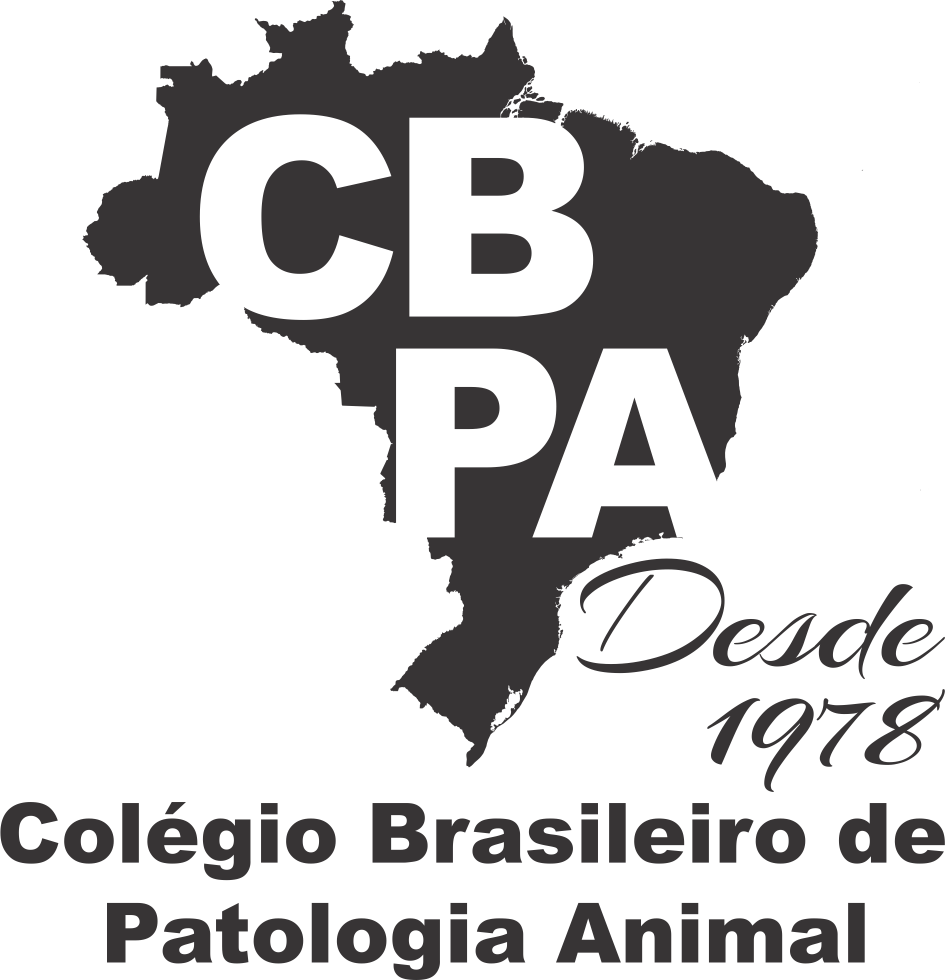Resultado da pesquisa (2)
Termo utilizado na pesquisa Serviço de Inspeção Federal
#1 - Time series evaluation of ascitic syndrome condemnation at poultry abattoirs under Federal Inspection Service of Brazil (2010-2019)
Abstract in English:
Over the last decade, Brazil registered a 10.56% increase in the number of poultry slaughtered in establishments registered under the “Serviço de Inspeção Federal” (SIF - Federal Inspection Service), as a result of technological advances in management, health and genetics applied to national aviculture. At slaughter, during post-mortem inspection, carcasses can be totally or partially condemned for various reasons, including ascitic syndrome. This syndrome has economic implications for the industry, in addition to being a problem for the health and welfare of poultry. The objective of this work was to evaluate the historical series (2010-2019) of partial and total condemnations of poultry carcasses due to ascitic syndrome in slaughterhouses registered under the SIF and located in the main poultry-producing states. Through official data, the condemnation occurrence index (COI) and the adjusted seasonal index (ASI) were calculated. The condemnation rate was 1,140 carcasses condemned, totally or partially, for ascitic syndrome for every 1,000,000 poultry slaughtered. The smallest and largest COIs were found in São Paulo (February 2010) and in Goiás (January 2017), respectively. The occurrence of condemnations for this syndrome was cyclical throughout the historical series, showing peaks of condemnation in all years evaluated, with the highest ASIs in July, August and September, and with rates varying between 1.24 and 1.54 in these months. Considering the period of pre-slaughter housing, the highest ASIs coincide with the coldest period of the year (May to August) for all analyzed states. The results show that ascitic syndrome is a growing problem in Brazil, with greater occurrence during the coldest months of the year, having a negative impact on animal health and the profitability of producers and industries in the poultry production chain.
Abstract in Portuguese:
O objetivo deste trabalho foi avaliar a série histórica (2010-2019) de condenações parciais e totais de carcaças de aves por síndrome ascítica em abatedouros registrados no SIF localizados nos principais estados produtores de carne de frango. Através de dados oficiais, foram calculados o índice de ocorrência de condenações (IOC) e o índice de sazonalidade ajustado (ISA). A taxa de condenação foi de 1.140 carcaças condenadas total ou parcialmente por síndrome ascítica a cada 1.000.000 de aves abatidas. O menor e maior IOCs foram encontrados em São Paulo (fevereiro/2010) e em Goiás (janeiro/2017), respectivamente. A ocorrência de condenações por esta síndrome teve comportamento cíclico ao longo da série histórica, apresentando picos de condenação em todos os anos avaliados, sendo os maiores ISAs encontrados nos meses de julho, agosto e setembro, com índices variando entre 1,24 e 1,54 nestes meses. Considerando o período de alojamento pré-abate, os maiores valores de ISAs coincidiram com o período mais frio do ano (Maio a Agosto) para todos os estados analisados. Os resultados mostram que síndrome ascítica é um problema crescente no Brasil, com maior ocorrência durante os meses frios do ano, impactando negativamente a saúde dos animais e a lucratividade dos produtores e indústrias da cadeia produtiva de frango de corte.
#2 - Pathological and bacteriological characterization on broilers totally condemned due to colibacillosis under the control of the Federal Inspection Service, 37(9):949-957
Abstract in English:
ABSTRACT.- Casagrande R.A., Machado G., Guerra P.R., Castro L.A., Spanamberg A., Silva S.C., Cardoso M.R.I. & Driemeier D. 2017. [Pathological and bacteriological characterization on broilers totally condemned due to colibacillosis under the control of the Federal Inspection Service.] Caracterização anatomopatológica e bacteriológica em frangos de corte condenados totalmente por colibacilose sob Serviço de Inspeção Federal. Pesquisa Veterinária Brasileira 37(9):949-957. Setor de Patologia Veterinária, Faculdade de Veterinária, Universidade Federal do Rio Grande do Sul, Av. Bento Gonçalves 9090, Bairro Agronomia, Porto Alegre, RS 91540-000, Brazil. E-mail: davetpat@ufrgs.br
Colibacillosis is the main infectious cause of total carcass condemnation in broilers in southern Brazil. This study aims to determine the degree of agreement between the total carcass condemnation for colibacillosis in broilers slaughtered in establishments under Federal Inspection Service (SIF) with the pathological and bacteriological diagnosis. The study was conducted with 45 broilers totally condemned by colibacillosis (case) and theirs 45 respective controls (chickens without lesions). All broilers condemned had gross lesions and the controls had not. The Kappa-Cohen’s test showed that these two variables had almost perfect agreement. Broilers condemned showed lesions in liver (27/45); liver and air sacs (11/45); liver and heart (2/45); liver, heart and air sacs (2/45); liver, air sacs and oviduct (1/45); liver, air sacs, heart and subcutaneous (1/45); and liver, air sacs, oviduct and spleen (1/45). There is almost perfect agreement between carcass condemnation and liver damage. Histologically, in 41 cases and 12 controls were observed lesions, the most frequent diagnoses were random necrotizing hepatitis, fibrinous-heterophilic bronchitis, acute pericarditis and lymphoplasmacytic tracheitis. In hepatitis cases was isolated Escherichia coli, Enterococcus sp. and Streptococcus sp. (10/38) and in bronchitis or bronchopneumonia E. coli and coagulase positive Staphylococcus (9/14). The polymerse chain reaction (PCR) and immunohistochemistry (IHC) tests for Mycoplasma gallisepticum and M. synoviae were negative. In cases of total carcass condemnation by Colibacillosis the liver was the main organ affected. Therefore, the condemnation criteria should be revised, suggesting conviction for hepatitis in these cases, because other bacteria can cause hepatitis, as demonstrated in this study.
Abstract in Portuguese:
RESUMO.- Casagrande R.A., Machado G., Guerra P.R., Castro L.A., Spanamberg A., Silva S.C., Cardoso M.R.I. & Driemeier D. 2017. [Pathological and bacteriological characterization on broilers totally condemned due to colibacillosis under the control of the Federal Inspection Service.] Caracterização anatomopatológica e bacteriológica em frangos de corte condenados totalmente por colibacilose sob Serviço de Inspeção Federal. Pesquisa Veterinária Brasileira 37(9):949-957. Setor de Patologia Veterinária, Faculdade de Veterinária, Universidade Federal do Rio Grande do Sul, Av. Bento Gonçalves 9090, Bairro Agronomia, Porto Alegre, RS 91540-000, Brazil. E-mail: davetpat@ufrgs.br
A colibacilose é a principal causa infecciosa de condenação total de carcaça em frangos de corte no sul do Brasil. Esse trabalho tem por objetivo determinar o grau de concordância entre a condenação total por colibacilose de frangos de corte abatidos em estabelecimento sob Serviço de Inspeção Federal (SIF) com o diagnóstico anatomopatológico e bacteriológico. O estudo foi realizado com 45 frangos de corte condenados totalmente por colibacilose (caso) e seus respectivos 45 controles (frangos sem lesões). Em todos os frangos condenados pelo SIF havia lesões macroscópicas e, nos controles não se observou. Através do teste Kappa-Cohen´s essas duas variáveis apresentaram concordância quase perfeita. As aves condenadas apresentaram lesões em fígado (27/45); em fígado e sacos aéreos (11/45); em fígado e coração (2/45); fígado, sacos aéreos e coração (2/45); fígado, sacos aéreos e oviduto (1/45); fígado, sacos aéreos, coração e tecido subcutâneo (1/45); e fígado, sacos aéreos, oviduto e baço (1/45). Observou-se concordância quase perfeita entre condenação e lesão hepática. Histologicamente, em 41 casos e 12 controles observaram-se lesões, sendo os mais frequentes hepatite necrosante aleatória, bronquite fibrino-heterofílica, pericardite aguda e traqueíte linfoplasmocitária. Nas aves com hepatite identificou-se E. coli, Enterococcus sp. e Streptococcus sp. (10/38) e, nas aves com bronquite ou broncopneumonia isolou-se Escherichia coli e Staphylococcus coagulase positiva (9/14). O PCR em tempo real e a imuno-histoquímica para Mycoplasma gallisepticum e M. synoviae foram negativos. Nos casos de condenação total por colibacilose o fígado foi o principal órgão acometido, portanto, o critério de condenação deveria ser revisto, sugerindo condenação por hepatite nesses casos, já que outras bactérias podem causar hepatite, como foi demonstrado nesse estudo.









